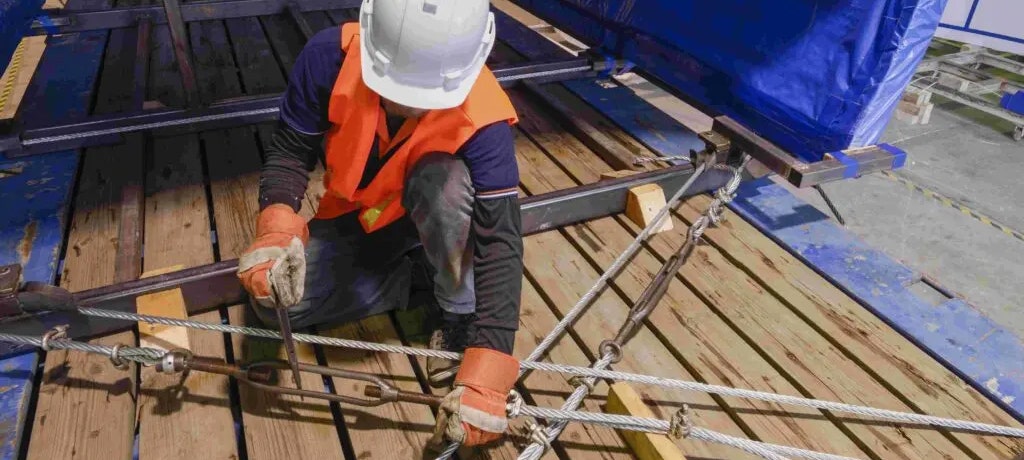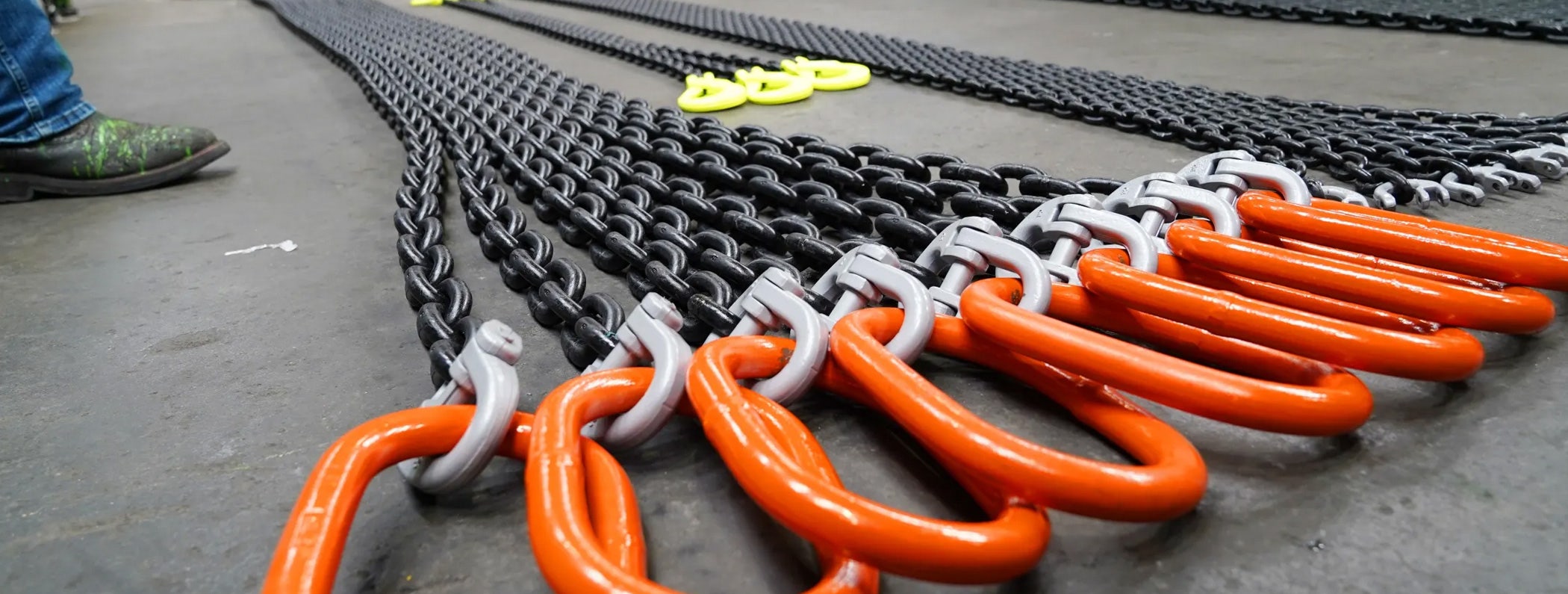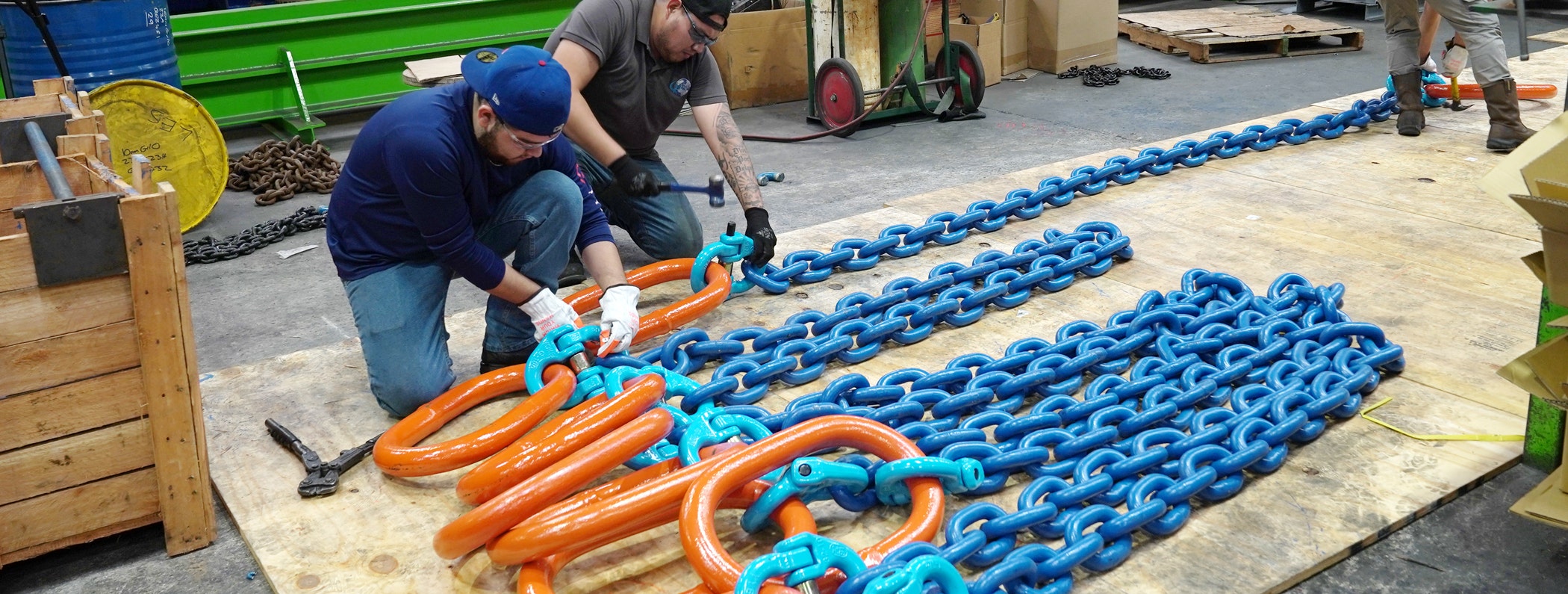Best Practices for Inspecting, Replacing, and Maintaining Wire Rope Slings

Wire rope slings have played a critical role in applications like lifting, rigging, and hoisting. They are usually made from galvanized or un-galvanized steel wire strands, which are woven into ropes with end terminations. The end terminations can be loops or hooks.
Several industries, such as mining, manufacturing, shipping, and power generation, use wire rope slings because they are easy-to-use, cost effective, and reliable. Depending on the type of load and crane, you can use an assembly of wire rope slings for lifting, rigging, and hoisting.
Although they are extremely strong and durable, wire rope slings require regular maintenance and inspection. They must be inspected to ensure safety and prevent economic losses. In this short guide, we will take a look at wire rope sling inspection, maintenance, and replacement.
A. How to Inspect Wire Rope Slings
As mentioned before, the purpose of wire rope sling inspection is to identify any damage or excessive wear before it leads to a disaster. Two leading organizations in the US, OSHA, and ASME have published inspection and maintenance guidelines to ensure wire rope slings safety and functionality.
Let’s take a look at the two critical aspects of wire rope sling inspection, how often you should do it, and how to do it.
1) How Often to Inspect
The two standards governing the criteria and guidelines of wire rope sling inspection are OSHA 1910.184 and ASME B30.9. As per these guidelines, there are three types of inspections.
i. Initial Use
This inspection should be carried out immediately after receiving the wire rope slings. During this inspection, make sure to check the sling identification tags. These tags will bear the product information, its rated load capacity, and other specifications. Check if they are what you ordered and what you need.
ii. Prior to Use
The second type of wire rope sling inspection is to be carried out daily or prior to use. As wire rope slings are used in a wide range of applications, it is always better to inspect them before each use. In other words, if you are going to use a sling three times a day, you should inspect it three times.
As wire rope slings can get damaged during a loading or rigging application, this inspection is extremely critical. You can have designated personnel, usually a competent crew member, to inspect wire rope slings before each use.
iii. Periodic
Only a certified professional or service provider can carry out periodic inspections. You also need to document each periodic inspection and maintain records, as per the ASME B30.9 guidelines. The schedule of periodic wire rope sling inspection depends on factors like frequency of use, the severity of work conditions, type of lifting or rigging, and experience gained on the service life of wire rope slings used in similar applications.
Depending on these factors, inspection schedule guidelines are as follows.
- Normal service: Yearly
- Severe service: Monthly to quarterly
- Special service: As recommended by a qualified person
iv. How to Inspect
Even though it’s usually a visual inspection, you have to be thorough with it. Neither OSHA nor ASME has specified any fixed sling inspection process. You need to set up a process of your own based on your requirements, rope sling usage, and other factors.
Usually, a proper wire rope sling inspection process should include the following steps:
- Make sure to lay down the sling on a flat surface in such a way that all its areas are visible and easily accessible.
- You can use a rag or a wire brush to clean the wire before the inspection. It can help you see the fittings and wires more clearly.
- You should inspect the entire rope sling carefully.
- Be extra thorough when checking damage-prone areas such as fittings and attachments.
- If you find any damage, check it against the service removal criteria set as per relevant OSHA or ASME standards.
- Don’t forget to label the wire rope slings you have inspected.
- If possible, maintain a detailed record of all your sling inspections. Well-kept records make it easier to identify slings that are nearing the end of their service life or are damaged.
- Always store the wire rope slings in safe areas, away from heat, water, dirt, and any harsh chemicals.
a) Check the Sling Identification Tag
Sling tag identification is the most critical step in sling inspection. These tags help you identify the usage specifications of the slings. So, make sure to maintain the tags in excellent condition throughout the lifespan of the slings. If the tag is damaged or illegible, remove the sling from use immediately.
As per ASME B30-9 standard, Section 9-2.7.1, the tag should have the following information:
- Manufacturer’s name and/or trademark
- Sling diameter or size
- The number of legs, if there is more than one
- Rated load (for at least one hitch and the angle upon which it is based)
B. When to Replace Wire Rope Slings
If you come across any of the following scenarios during your sling inspection, you will need to remove the slings immediately. Furthermore, if you are unsure of the potential damage, discontinue the use of slings.
1. Missing or Illegible Sling Identification (Tag)
As mentioned before, the tag bears all the vital information and specifications. If the tag is missing or illegible, it’ll be impossible to know the rated load capacity of the sling. If you end up using it for a load higher than the rated capacity, it can lead to an accident.
2. Broken Wire
While the structure and specifications of wires vary greatly, wire rope slings often have the following four key components:
- Core: The core is made from steel, synthetic, or natural fibers. The function of the core is to provide strength and support to the wires.
- Wires: Wires are made from materials like steel, iron, bronze, and stainless steel. Wires surround the core, and they come in different sizes and strengths.
- Strands: Strands are made of two or more wires twisted in helical or spiral patterns. The more strands you have, the bigger the sling diameter is.
- Lubricants: Lubricants make it possible to use rope slings with ease. Most common lubricants are foams, minerals, petroleum gas, and grease.
If you see broken wires during your sling inspection, you should discontinue using the rope. Broken wires can puncture your hands.
The guidelines for allowable broken wires are as follows:
-
Single Part Body Slings and Strand Laid Grommets:
- 5 broken wires in one strand in one rope lay
- 10 broken wires in all strands in one rope lay
-
Cable-laid, cable-laid grommets, and multi-part slings:
- Cable-laid grommet: 20 per lay
- Less than 8-part braid: 20 per braid
- 8-part braid or more: 40 per braid
3. Distortion
Distortion constitutes damages like kinking, crushing, and birdcaging, among others. If you see any such damage or wires and strands pushed out of their original positions, you need to replace the wire rope sling immediately.
4. Heat Damage
Wire rope damage due to heat results in metallic discoloration, fusing of wires, or loss of lubricant. Make sure to replace the sling if there is heat damage.
5. Damaged End Attachments
You will need to discontinue using a wire rope sling if you see slipped splices, displaced tucked strands, and cracked, bent, or broken attachments.
6. Bent Hooks
If you see bent hooks with twisting exceeding 10 degrees or normal throat openings (measured at the narrowest point) exceeding 15%, you need to replace the sling.
7. Corrosion
While light surface rust will not affect the strength of wire rope slings, you will need a replacement if the corrosion has caused pitting or binding of wires.
8. Unbalanced Slings
When using wire rope slings, pulling through a loop can push out wires and strands from their original positions, pushing the slings out of balance. If you see this damage, replace the slings immediately.
9. Kinks
Kinks are nothing but loops with permanent wire and strand distortions. As this type of damage is irreparable, you need to replace the slings right away.
10. Doglegs
Improper use of wire rope slings can cause doglegs, which are permanent bends. If the slings have minor doglegs with no strand distortion or if you can’t see them when the sling is under tension, you can continue using the sling. However, replacement is necessary if the doglegs are severe.
Make sure to discard the damaged wire rope slings in an eco-friendly manner. You should label the slings “Do Not Use” to avoid accidental use. Then, you should cut the eye and fittings from the rope, cut the rope into 3’ to 4’ sections, and send them for recycling.
C. Maintenance of Wire Rope Slings
The third most important step is wire rope sling maintenance. You should keep the following points in mind to ensure regular and comprehensive maintenance:
- Always keep the slings off the ground, in hanging position, and in a dry and cool environment.
- Keep them away from water and moisture to prevent corrosion.
- Wire rope slings require lubrication, especially when used in harsh environments. Follow manufacturer’s guidelines for lubricating the slings.
- Make sure to follow manufacturer’s or ASME or a certified expert’s guidelines if you are using the slings in extreme temperatures.
Conclusion
Wire rope slings play a critical role in a wide range of industries such as mining, manufacturing, and shipping, among others. Although they are strong and have a long lifespan, rope slings do need regular inspection and maintenance to ensure safety and longevity. Hopefully, this guide will help clear all your doubts regarding wire rope sling inspection, replacement, and maintenance. If you need help with any rigging equipment inspection, maintenance, and replacement, feel free to reach out to our team at Holloway Houston Inc.
Shop Online Rigging & Lifting Slings















